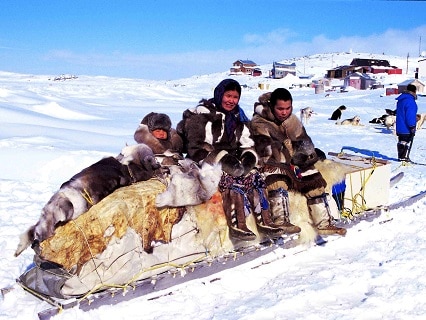

How does Canada’s quality of life rank with the rest of the world?
This year’s United Nations quality of life index puts Canada tied with New Zealand for a respectable 9th place among countries worldwide, but a new report from the Centre for the Study of Living Standards suggests that internal disparities between various regions of the country paint a starkly different picture.
Unlike other international indicators which rank countries by GDP, the UN’s Human Development Index (HDI) tries to measure “achievement in key dimensions of human development” by focusing on three factors: health as a measure of average life expectancy, education in terms of years of schooling per citizen and standard of living as figured by gross national income per capita.
And while as a whole, Canada’s 9th place perch on the 188 country list -one spot below the United States, five spots ahead of Sweden and the United Kingdom- represents a notable national achievement, when the same three development indicators are applied to the various provinces and territories and then again ranked on the international scale, the situation is drastically different, with provinces like Alberta and Ontario placing 4th and 8th respectively while Nunavut comes in at 46th – essentially at the same ranking as countries like Latvia and Croatia.
“Although most Canadian provinces and territories achieve impressive ranks in the international context, evidently Canada’s overall HDI masks substantial variation among the different regions,” says the Centre’s report.
Canada’s life expectancy at birth puts it 12th internationally at an estimated 82.0 years, but internally, British Columbia had the highest ranking and Nunavut came in last. In terms of education, Canadians aged 25 and older were found to have 13.0 years of schooling on average, placing it 6th internationally, while the per province ranking has the Yukon rated highest and Nunavut last once again. Finally, by gross income per capita, Canada ranked 20th overall while internally the Northwest Territories came out with the highest ranking and Prince Edward Island the lowest.
The report says this year’s disparities between regions were a little less marked in comparison to the same UN rankings conducted from the year 2000, in part explained by below average growth in quality of life for the top three regions – Alberta, Ontario and BC -coupled with above average growth among the lowest ranked regions- Nunavut, PEI and New Brunswick.
The Centre recently published a separate report focusing on development opportunities for the Inuit of Nunangat, the territory comprised of Nunavut, western Northwest Territories, northern Quebec and north-eastern Labrador, where it described the issues currently facing Inuit communities as “complex and not given to quick or easy solutions.”
“There is, indisputably, a crisis in Inuit labour market outcomes across all four regions,” says the report. “Inuit Nunangat’s population is very young relative to Canada’s population with 35.6 per cent below the age of 15.
Furthermore, the Inuit population is projected to increase at rates above that of the Canadian population,” says the report, which concludes that necessary steps to improve economic and development opportunities for present and future Inuit generations include a reform of Nunangat’s education systems and the creation of viable local economies.
Leave a Reply
You must be logged in to post a comment.



 Share
Share Tweet
Tweet Share
Share




Comment